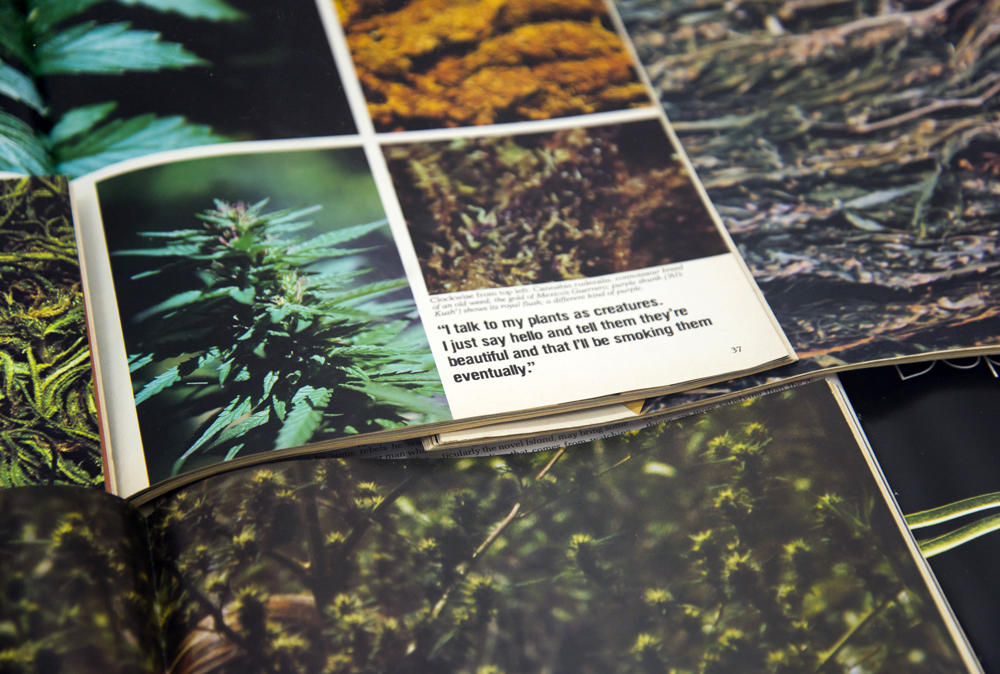one pic #5. Joachim Koester
detail from The Secret Garden of Sleep, 2008
image © wfw
–
For his solo exhibition at Centre d’Art Contemporain in Geneva, Danish artist JOACHIM KOESTER presents a body of work that mixes documentary archive and fiction and that demonstrates his interest in alternative communities and in histories of occult and esoteric practices. The picture above comes from the Secret Garden of Sleep (2008), a work which includes a series of silver gelatin prints featuring home-grown cannabis plants, a collection of magazines as well as an artist’s text:
In the mid 1970s a new type of imagery turned up in counter-cultural magazines, such as High Times and Sinsemilla Tips. Resin-dripping cannabis plants would appear as centerfolds, modelled on the photographic style of Playboy. This interest in the physicality of the plant happened at a time when more people in the United States were growing cannabis themselves. The formerly lush Mexican fields were in shambles and a huge market for domestically grown marijuana had opened up.
The season of domestic outdoor growing came to halt in 1982 when the Reagan administration set out to crush the domestic marijuana industry. Not only did Reagan see the increase in home-grown marijuana as unpleasantly reminiscent of more lenient times, he also perceived the use of marijuana as an important symbol of the counter culture, a symbol that had to be eradicated. In a few years cannabis moved from being on the cusp of acceptance to being domestic enemy number one. The means for achieving this was fierce legislation on growers and users.
Little did the Reagan administration suspect that they had started a genetic revolution. As harsh sentences were implemented—for example, growing any amount of marijuana in Oklahoma could result in a life prison sentence—and surveillance and government control increased, domestic cannabis growing moved indoors and, ironically, a plant of wonder materialized. Amateur gardeners in the Pacific Northwest applied their talents to crossbreed cannabis Indica and Sativa strains. They created hybrids that thrived indoors, cultivated under blazing metal halide light. Gone were the days of low-yield plants that sometimes grew to be as tall as five meters. Instead a muscular dwarf emerged, only knee-high, with buds the size of fists and a concentration of psychoactive compound significantly higher than before.
Psychoactive plants, like cannabis, can alter our experience of reality, bridging the world of matter and consciousness. In this history, consciousness, for better or worse, became engraved into the very flesh of the plant, as a consequence of desire, politics and legislation. With the series From the Secret Garden of Sleep I have made photographs of several strains of home-grown cannabis. These images of hybrids, that reflect a sub-genre of plant photography, point to the history behind modern cannabis’ otherworldly appearance. – JOACHIM KOESTER, 2008
➝ The place of Dead Roads is on view at Centre d’Art Contemporain in Geneva until August 8, 2014. Please note that the exhibition features a new video installation, coproduced by the Centre.
–

comments are closed !